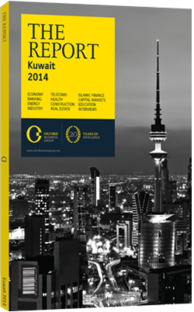Banking
The Company
Set up in 1960, Gulf Bank KSC (GBK) is a Kuwait-based commercial bank, listed on the Kuwait Stock Exchange since 1984. It is currently the fourth-largest bank on the KSE, with a market capitalisation of KD1.1bn ($3.87bn). GBK was one of the worst-hit banks in the MENA region during the 2008 financial crisis after reporting net losses of KD359.5m ($1.26bn), primarily due to derivative transactions and had to be rescued by the Central Bank of Kuwait by guaranteeing all deposits in local banks in order to restore confidence. In January 2009, the bank raised KD376m ($1.32bn) in an emergency rights offering to existing shareholders, and the unsubscribed portion of 16% was taken up by the Kuwait Investment Authority. Later, the bank recovered under the then new leadership, Michel Accad, who steered the company through the financial difficulties till he resigned in October 2013 citing personal reasons. The bank appointed a new CEO, Cesar Gonzalez-Bueno, who took the helm in March 2014. The bank currently operates through 57 branches spread across Kuwait and is the third largest conventional bank and the fourth largest by asset base as compared to the rest of the banks in Kuwait.
GBK made progress with respect to loan quality as non-performing loans (NPLs) declined consistently over the past five years from KD1.1bn ($3.87bn) to KD240.7m ($846.3m) by the end of 2013. The bank increased provisions to KD229.7m ($807.65m) in 2013 from KD209.7m ($737.33m) in 2012. Consequently, its NPL-to-gross loans ratio declined to 6.5% in 2013 from a peak of 30.3% in 2009 and NPL coverage improved to 95% in 2013 as compared to 45% in 2009 and 56% in 2012.
In terms of lending, GBK saw net loans growth of 2.1% to KD3.5bn ($12.31bn) in 2013 despite reporting slightly higher provisions. The growth came particularly from consumer banking and was led by a higher disbursement of personal facilities. On the positive side, the bank was able to reduce its exposure to the financial services and real estate sectors by 4.3% and 9.8%, respectively. Geographically, the loan growth came primarily from the bank’s international portfolio as domestic corporate growth has declined on the back of sluggish growth within Kuwait itself. Despite a lower operating income of KD109.4m ($384.66m) due to a strategic decline in foreign currency and derivative trading, GBK’s net profit improved by 4.1% to KD32.2m ($113.22m) on the back of lower provision charges during 2013, as well as cost-cutting initiatives. The bank’s return on average assets remained in line with 2012’s return of 0.65%, although higher retained earnings in equity led to a marginal decline in return on average equity at 6.9%, slightly below the industry average of 7.7%. On the assets side, customer deposits increased by 2.4% to KD3.3bn ($11.6bn). resulting in a slight decline in the loan-to-deposit ratio at 79.4%. The bank continues to reduce its deposit concentration ratio in an effort to maintain a diversified and stable funding base of core retail and corporate deposits.
Development Strategy
After accomplishing its turnaround objectives laid out in the previous strategy, GBK is now working on expansion and executing its growth strategy. The bank’s strategy for 2014-16 is based on three core deliverables that include a focus on completing the credit recovery and improvement in asset quality by getting rid of legacy bad loans and a reduction in NPLs, to emphasise building a best-in-class wholesale and retail business leading to lending growth and search for new growth opportunities.
The bank aims to grow its market share in the wholesale and retail businesses through superior sales and service levels for the most profitable customers. GBK’s bottom line is expected to improve in 2014 as corporate lending grows in the domestic market on the back of a much anticipated accelerated implementation of the development plans in Kuwait. GBK has yet to announce its strategy following the appointment of its new CEO. However, GBK’s overall strategy is expected to remain centred around its core competencies of commercial and retail lending within the Kuwaiti market as well as on strengthening its domestic franchise.
You have reached the limit of premium articles you can view for free.
Choose from the options below to purchase print or digital editions of our Reports. You can also purchase a website subscription giving you unlimited access to all of our Reports online for 12 months.
If you have already purchased this Report or have a website subscription, please login to continue.

